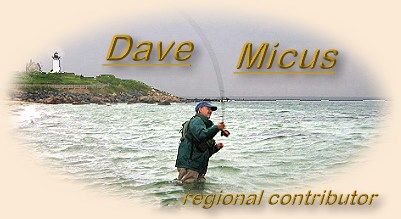
| ||
|
March 1st, 2004
|
2. When adding a finger loop to the end of the fly line, cut the end of the line at an angle with a razor blade. This will make it easier to slide the line into the loop end. 3. At the end of the season, store your line on a line winder. This will reduce the line memory and will result in fewer tangles at the beginning of the season. If you don't have a line winder, wind the line around a coffee can. 4. When you remove a line from your reel spool (either for the season or for good), keep an inch of backing on the reel end of the line. It will then be easy to spot the reel end from the leader end. 5. If you use a loop-to-loop connection for line to leader, check loops carefully at the beginning of each season. The finger loops don't last much more than one year, and you don't want to lose a good fish because of a worn loop. 6. Make an elastic band for your leader material spool. Buy the elastic material from a fabric store, measure and cut the length you need, overlap the ends and secure them together with a touch of crazy glue. Cut a hole in the middle of the band and pass the tag end of the leader material through. This will keep the leader material from unraveling and also give you easy access to the tag end. 7. Keep a loop tied on the tag end of your leader material spool. If, while fishing, you need a new leader, you can just strip off the amount you need from the spool, cut it, and attach it to the fly line. If you use the elastic band suggested above, you can pass the loop through the hole in the band so that it is ready to unwind when needed. 8. For Northeast striper and blue fishing, you don't need a graduated leader. Fish a straight six to nine foot piece of flurocarbon in 15 or 20 lb. test. Use a bimini twist to attach the leader to the fly line loop. This significantly lessens the knots between the fly line and the fly, reducing the chance of knot failure. ~ Dave
About Dave: Dave Micus lives in Ipswich, Massachusetts. He is an
avid striped bass fly fisherman, writer and instructor.
He writes a fly fishing column for the Port City Planet
newspaper of Newburyport, MA (home of Plum Island and Joppa Flats)
and teaches a fly fishing course at Boston University.
Dave Micus lives in Ipswich, Massachusetts. He is an
avid striped bass fly fisherman, writer and instructor.
He writes a fly fishing column for the Port City Planet
newspaper of Newburyport, MA (home of Plum Island and Joppa Flats)
and teaches a fly fishing course at Boston University.
|
|
Previous Dave Micus Columns If you would like to comment on this or any other article please feel free to post your views on the FAOL Bulletin Board! 
|